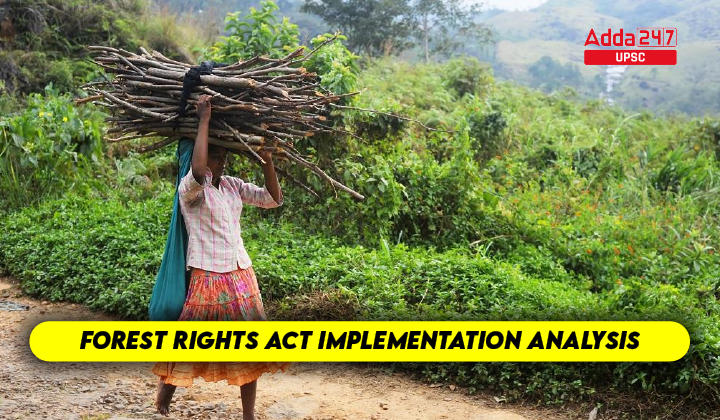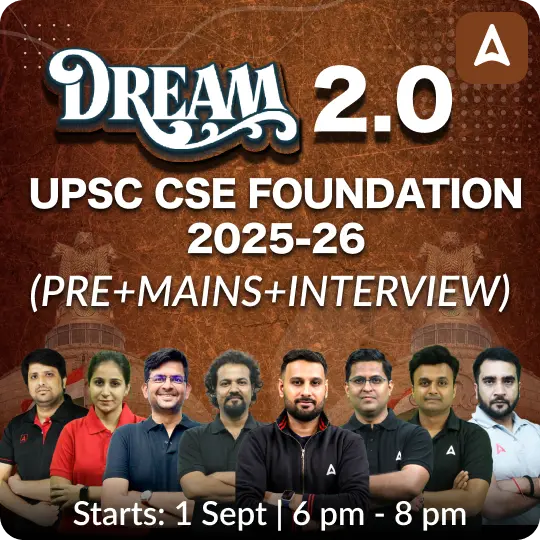Table of Contents
Context- A fact-finding committee formed by Call for Justice, a Delhi-based organization, has found “mixed” implementation of the Forest Rights Act (FRA) of 2006 in five States across the country.
Relevance: GS 3
Background
- Conducting Body: A committee formed by Call for Justice, a Delhi-based entity, undertook the analysis.
- Committee Leadership: Retired Justice S.N. Dhingra spearheaded the committee.
- Study Period: The analysis spanned eight months.
- Regions Examined: The states of Assam, Chhattisgarh, Maharashtra, Odisha, and Karnataka were the focus of the study.
Principal Findings Across States
- Assam (Specifically Dima Hasao and Hailakandi Districts): The current framework of the FRA falls short in accommodating the practice of shifting or jhum cultivation, integral to the life and ecosystem of the region’s indigenous communities.
- Chhattisgarh (Kanker and Korba Districts): Delays in the decision-making process were notable, impacting the FRA’s effective execution.
- Maharashtra (Gadchiroli and Nashik Districts): Effective implementation was noted in Gadchiroli.
In Nashik, the implementation process remained incomplete, suggesting existing obstacles.
- Odisha (Kandhamal and Sundargarh Districts): Notable progress was observed in the application of the FRA. There was a marked disparity between the number of submitted and approved claims for individual and community forest rights.
- Karnataka (Ramnagara and Mysuru Districts): A mere 5.17% of submitted IFR claims received approval, indicating a significant rejection rate, the highest among the examined states.
General Insights
Community Rights Oversight: A widespread oversight concerning community rights was observed.
Ambiguity among different agencies regarding the distinction between individual and community rights was identified.
Strategic Recommendations: The findings advocate for a tailored approach to address the distinct environmental and cultural practices of indigenous populations, especially those in northeastern states.
The committee calls for more precise regulations and a more efficient framework to enhance the implementation of both individual and community forest rights.
Overview of the Forest Rights Act, 2006
- Purpose: To recognize and vest forest rights and occupation in forest lands to Forest Dwelling Scheduled Tribes (FDST) and Other Traditional Forest Dwellers (OTFD).
- Rights Included:
Title Rights: Ownership of land up to 4 hectares.
Use Rights: Extraction of Minor Forest Produce, grazing, etc.
Relief and Development Rights: Rehabilitation in case of illegal eviction, access to basic amenities.
Forest Management Rights: Right to protect, regenerate, conserve, or manage community forest resources.
- Authority: Gram Sabha initiates the process for determining IFR and CFR.
Rationale behind FRA, 2006
- Historical Injustices: Address injustices to forest-dwelling communities by colonial and post-colonial forest management policies.
- Empowerment: Empower forest dwellers to access, use, and manage forest resources sustainably.
Injustices to Forest Dweller Communities
- Pre-Colonial Era: Traditional rights over forests were recognized.
- Colonial Era: Introduction of the Indian Forest Act, 1878, leading to restricted access and exploitation of forests for timber.
- Post-Independence Era: Continuation of colonial policies, treating forest dwellers as ‘encroachers’.
Addressing Historical Injustices through FRA, 2006
- Acknowledgment of Injustices: Recognition of historical wrongs to forest communities.
- Redressal Mechanisms: Recognizing individual and community rights to habitation, cultivation, and forest management.
Implementation Challenges of the FRA
- Individual vs. Community Rights: Focus on individual rights at the expense of community rights.
- Poor Recognition of IFRs: Resistance from the Forest Department, technological issues, and non-transparent processes.
- Challenges with Digital Processes: Implementation difficulties in areas with poor connectivity.
- Incomplete Recognition of CFRs: Slow progress and resistance from the forest bureaucracy.
- Limited Recognition in Many States: Inconsistent recognition of CFRs across states.
- Interests of Conservationists and Development Lobby: Non-recognition of community rights serving external interests.
- Neglect of Forest Villages: Inadequate attention to converting forest villages into revenue villages.
Way Forward
- Empower Gram Sabha: Involve local self-governments in forest management decisions.
- Inclusive Decision Making: Include rights holders in decision-making processes.
- Awareness and Training: Educate Forest dwellers about their rights under the FRA.
- Capacity Building: Strengthen civil society support for forest dwellers’ rights.
- Monitoring and Accountability: Ensure compliance with FRA provisions and hold violators accountable.
- Integrated Planning: Balance development and conservation needs while respecting forest dwellers’ rights.
- Consultative Processes: Engage all stakeholders in finding sustainable solutions.
Conclusion
Need for Comprehensive Understanding and Support: Political leaders, bureaucrats, and environmentalists must fully grasp and support the FRA’s objectives to address past injustices and promote democratic forest governance and sustainable livelihoods.



 TSPSC Group 1 Question Paper 2024, Downl...
TSPSC Group 1 Question Paper 2024, Downl...
 TSPSC Group 1 Answer key 2024 Out, Downl...
TSPSC Group 1 Answer key 2024 Out, Downl...
 Cabinet Ministers of India 2024, New Cab...
Cabinet Ministers of India 2024, New Cab...







